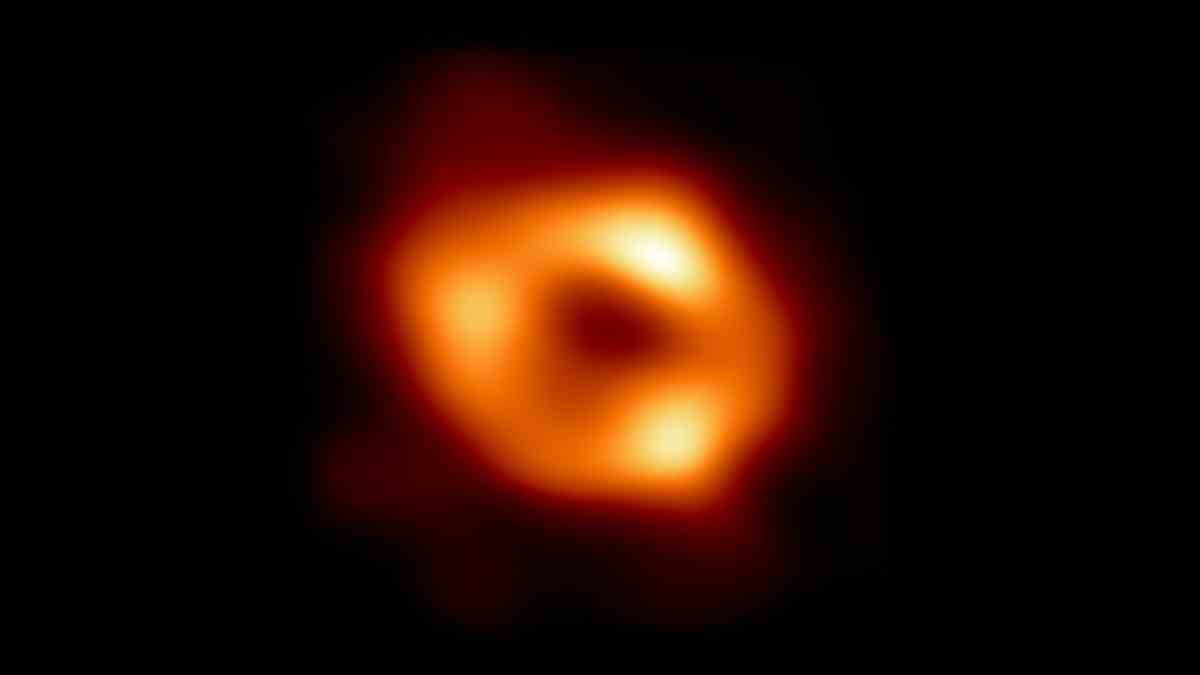An international team of astronomers has released the first image of the suspected supermassive black hole in the Milky Way. It is the first visual evidence for the existence of such an object at the center of the galaxy. According to the researchers, the evidence is “overwhelming” that it is actually a so-called black hole – a structure of space-time whose mass, concentrated in a very small space, generates such a strong gravitation that even light cannot escape it.
The data for the current image was collected with eight radio telescopes distributed around the world, which were synchronously pointed at the object at the heart of the Milky Way over several nights in April 2017. It is named Sagittarius A* after its position in the Sagittarius constellation. The simultaneous use of the telescopes created a virtual giant telescope, the “Event Horizon Telescope” (EHT). Only with this construction was it possible to capture the black hole photographically. Despite its enormous mass of four million times that of the Sun, it appears about 27,000 light-years away in the sky, about the size of a donut on the moon.
The black hole itself is completely dark because it is itself absorbing light, and this area appears as the central shadow in the image. What is visible, however, is a ring of hot gas rotating around the object, emitting radiation as it does so. The image shows this radiation distorted by the black hole’s strong gravitational pull.
The recording agrees with all theoretical predictions
“The image corresponds to all predictions, including the calculated mass,” said Karl Schuster, director of the Institute for radio astronomy in the millimeter range in Grenoble, whose telescopes are involved in the EHT network. “For me, the most exciting thing is that with these measurements we have worked out the methods for making dynamic images or films in the future.”
The image follows a success in 2019 when the EHT team presented the first-ever image of a black hole. Back then, the supermassive black hole could be seen in distant galaxy M87. It is more than a thousand times larger and more massive than Sagittarius A*, but also two thousand times as distant. Nevertheless, it turned out to be easier to depict because it is quite stable due to its size. However, the specimen at the center of the Milky Way is comparatively small with a diameter of around 24 million kilometers, so that the hot gas in its vicinity takes only minutes to orbit it at almost the speed of light. This causes the object to flicker, which makes data analysis much more difficult.
The current recording was calculated from the data collected in 2017 during the first measurement run. Since then, the network has grown to eleven telescopes and has completed several further observing cycles. This data has not yet been evaluated. In the future, the method could allow even more precise recordings and also make it possible to test the gravitational theory under extreme conditions.
“Today we celebrate the image and we talk about what it tells us and why that is important,” said Anton Zensus, director at the Max Planck Institute for Radio Astronomy in Bonn and founding chair of the EHT. “Tomorrow we will continue our work to unravel the mysteries of the black holes in the universe”.

